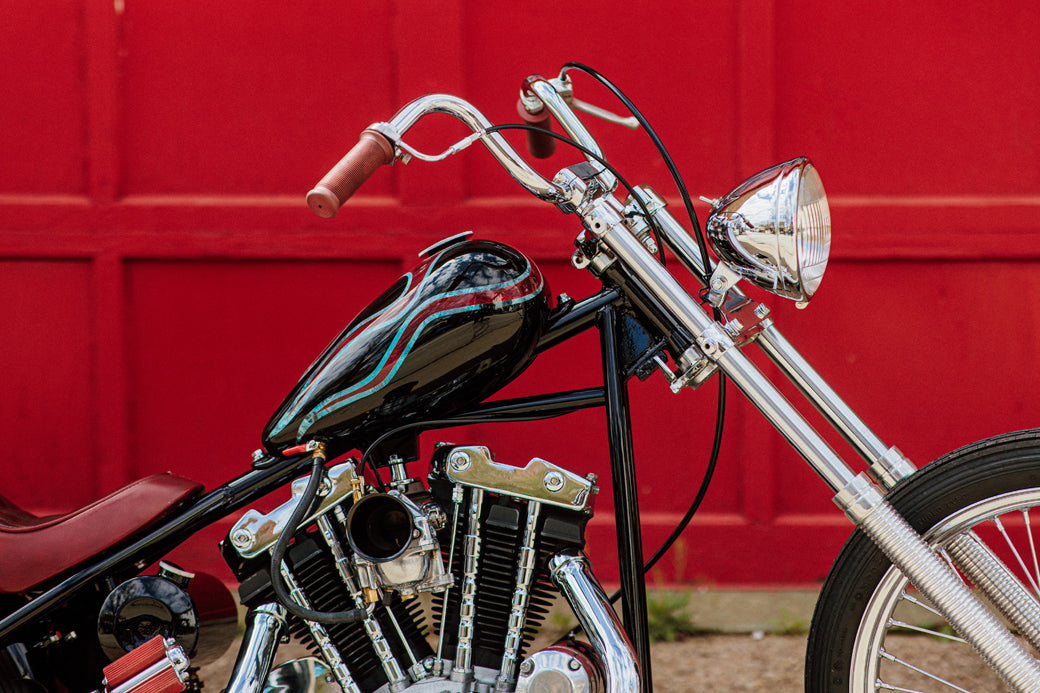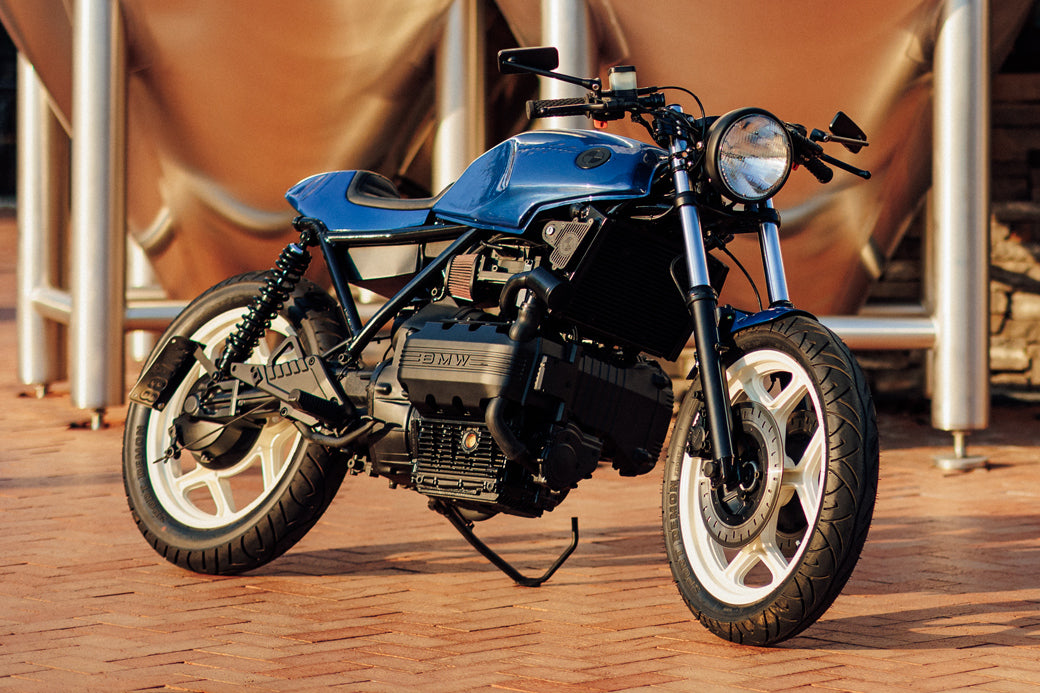Kyle Feather: I’m originally from Bedford county, and my dad has a shop there that he works out of. He’s been into British bikes for years and has a bunch of restored models and parts that he has picked up from swap meets. He built a BSA cafe racer and has a number of Triumphs that he’s been messing with forever. At one point, I suggested that we build a bobber. He mentioned using a BSA, so we started by digging up some parts to see how it could possibly come together.

KF: He likes anything but just started picking up Triumph, BSA, and even some Norton models over the years. I don’t know why British, but now they’re getting a little more scarce.
KF: A lot of the parts were stuff my dad had laying around. For instance, the frame is actually a BSA Thunderbolt with a six-inch extended hardtail welded on. We needed a good frame to work with, and the one that originally had this rear end on it was slightly twisted. We knew we had to get a new front loop, so we found the best frame and chopped the rear off of it before welding on the extended hardtail. All mounting tabs were cut off and reworked where needed. I have to give my dad, Randy, props on the welding. He’s a master welder who was a blacksmith with the railroad in Altoona.
KF: My dad had a few different engines we were considering. This one had a title, so that’s how it ended up on this bike. It was originally on a clean 1971 Lightning that we bought from a friend. We took it all the way down to port and polish the head and go through the transmission. These typically have a three-spring clutch, but this uses a four-spring racing setup. From there, it was just trial and error over and over with other parts.

KF: The shifter is on the right side and foot brake on the left. Compared to my Triumph, there’s not a lot of difference. They ride and sound similar, both parallel twins.
KF: There’s a 19-inch wheel we laced to a Triumph hub on the rear. It sat super low with the extended rear end, so the larger wheel kept it up a little more. We were deciding between the BSA style star hub and the Triumph hub, but I liked the spool look. Some Triumph models actually had the 19-inch wheels on both the front and rear.
KF: We didn’t have too much trouble finding parts for the bike. The front end was a lot of trial and error. We thought we were going to go with the open exposed spring look at first but liked the look of the shrouds. We started on it in September 2018 and worked on and off when I could get out there to help out. Realistically, we finished it around March 2020. Some days we would just be standing there looking at it in the garage, not knowing where to go with it. It was something that we would work on, then put aside and come back to later.













RANDY'S USED CARS / HERITAGE ROAD CYCLES







